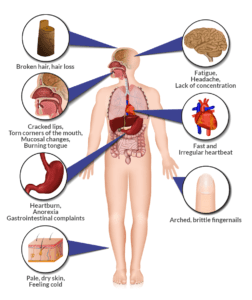Functions of kidney 5: blood cells, anaemia and EPO
What do the kidneys do? What do red blood cells and erythropoietin have to do with the kidneys? What’s renal anaemia? Read this article for the answers
Erythropoietin (EPO)-stimulated manufacture of red blood cells is one of the 7 key functions of the kidney. But let’s start with some basics.
What are the kidneys?
The kidneys are organs shaped like kidney beans, located in your back. They are found either side of your backbone. Most people have two kidneys, however some people may only have one. It is possible to live a normal, healthy and active life with just one kidney.
The kidneys are very important organs which help to remove waste materials from our bodies. However, they have several other important functions. The function covered in this article is the role the kidneys play in the production of blood.
Click here to learn more about the functions of the kidneys.
The role of the kidneys in the production of blood
The kidneys make a hormone called erythropoietin (EPO). A hormone is simply a chemical the body makes to send a signal to another part of the body. Think of them as a bit like a letter with instructions for their target. Hormones are transported in the blood to their destination. The end destination of EPO is the bone marrow in our long bones. The bone marrow is where red blood cells are made. The EPO tells the bone marrow to increase the production of red blood cells.
Why does the kidney make EPO?
The kidneys make EPO in order to increase the amount of red blood cells in the blood. They do this to increase the amount of oxygen in the blood. It is the red blood cells which carry oxygen around our body. Having more red blood cells means that more oxygen can be carried.
The kidneys can detect when the oxygen in the blood is too low, which might cause damage to the body. Therefore, the kidney acts to prevent this damage by making EPO to instruct the bone marrow to make more red blood cells.
The production of EPO is controlled by a ‘negative feedback system’. This means the kidney detects if less oxygen is being delivered to it in the blood and produces EPO as a result. Once the level of red blood cells has increased to a high enough level, the kidney stops making as much EPO.
By detecting the amount of oxygen in the blood and changing the amount of EPO it produces, the kidney plays an important role in blood production.
What is renal anaemia?
People with Stage 4 and Stage 5 Chronic Kidney Disease (CKD) develop a condition called renal anaemia. This is due to the damage to the kidneys.
Anaemia means that your body is producing fewer red bloods cells than is normal. In CKD the kidney is damaged, and because of this, it produces less EPO. As EPO tells the bone marrow to make more red blood cells, having less of it means less red blood cells are produced. This is renal anaemia.
The symptoms of renal anaemia are quite vague. They include tiredness, feeling weak and being short of breath.

Diagnosis and treatment
Renal anaemia can be diagnosed by a blood test. This measures something called haemoglobin. If haemoglobin is low, this indicates anaemia.
Renal anaemia is treated by increasing the amount of EPO produced by the kidneys. This can be done using:
- Erythropoiesis-stimulating agents (ESA), like Darbepoetin alfa (given as an injection once a week)
- Hypoxia-inducible factor–prolyl hydroxylase (HIF-PH) inhibitors, like Roxadustat (given as a tablet three times a week).
Summary
We have described a functions of kidney: blood cells, anaemia and EPO. We hope it has been helpful.
Other resources
Click here to learn more about renal anaemia.
Functions of kidneys 1: waste removal
Functions of kidney 2: fluid balance (also affects blood pressure)
Functions of kidney 3: acid-base balance
Functions of kidneys 4: blood pressure control (makes renin)
Functions of kidneys 6: vitamin D activation (activates cholecalciferol)
Functions of kidney 7: making prostaglandins.
Watch this video to learn more about erythropoietin
Last Reviewed on 10 March 2024
